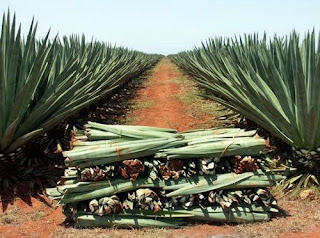 Coir is a multi-cellular natural bast fiber. It is extracted from the tissues surrounding the seed of the coconut palm. The scientific name of coconut plant is Cocos nucifera. Coir fibers are made from two different types coconut, brown fiber which is obtained from mature coconuts and finer white fiber which is extracted from immature green coconuts after soaking for up to 10 months. Both the raw materials of coconut palm result in fiber types with slightly different characteristics. This coconut plant is truly a source of renewable raw materials for both food and non-food products.
Coir is a multi-cellular natural bast fiber. It is extracted from the tissues surrounding the seed of the coconut palm. The scientific name of coconut plant is Cocos nucifera. Coir fibers are made from two different types coconut, brown fiber which is obtained from mature coconuts and finer white fiber which is extracted from immature green coconuts after soaking for up to 10 months. Both the raw materials of coconut palm result in fiber types with slightly different characteristics. This coconut plant is truly a source of renewable raw materials for both food and non-food products. The coconut tree grows in lots of nations of the entire world. But the coir fiber industry is only fully developed in a few countries. Around just 30% of the entirely accessible coconut husks will be highly processed to have coir fiber. Coir fiber production provides work and also revenue to several thousands of countryside, generally poor and rural people in the important producing countries such as India and also Sri Lanka. Coir is also developed far away such as Philippines, Indonesia, Vietnam and also South America. Coir fiber production typically takes small place and is a tiny family businesses.
Features of Coir Fiber
1. Coir is a stiff, less flexible and without softness.
2. Fiber length is up to 35 cm with a diameter of 12-25 microns.
3. This husk fiber contains the maximum amount of lignin among all the other natural fibers.
4. Tensile strength of Coir fiber is low compared to abaca.
5. White coir is made from unripe coconut, brown coir is made from ripe coconut
6. Coir fiber has good resistance to microbial action and salt water damage.
7. This fiber has great affinity to basic dye, acid dye and direct dye.
 Application of Coir Fiber
Application of Coir FiberCoir fiber has a great variety of applications at domestic as well as official decorative purpose.
1. It is widely used for floor mats, door mats, brushes, mattresses etc.
2. Common uses for brown coir fiber are in upholstery padding, sacking and horticulture.
3. It is used in handicraft industry and shell of coconut is used for button making as well.
4. This material is also used for electric insulation and packaging.
5. Brown coir fibers together to be used as upholstery padding for automobile industry.
6. This fiber is recommended substitute for sphagnum moss because it is free of bacteria and fungal spores.
7. It is not spoiled into water thus rope can make which is used at ship & boat.
Coir Fiber Properties and Common Application
Advertisements
 Coir is a multi-cellular natural bast fiber. It is extracted from the tissues surrounding the seed of the coconut palm. The scientific name of coconut plant is Cocos nucifera. Coir fibers are made from two different types coconut, brown fiber which is obtained from mature coconuts and finer white fiber which is extracted from immature green coconuts after soaking for up to 10 months. Both the raw materials of coconut palm result in fiber types with slightly different characteristics. This coconut plant is truly a source of renewable raw materials for both food and non-food products.
Coir is a multi-cellular natural bast fiber. It is extracted from the tissues surrounding the seed of the coconut palm. The scientific name of coconut plant is Cocos nucifera. Coir fibers are made from two different types coconut, brown fiber which is obtained from mature coconuts and finer white fiber which is extracted from immature green coconuts after soaking for up to 10 months. Both the raw materials of coconut palm result in fiber types with slightly different characteristics. This coconut plant is truly a source of renewable raw materials for both food and non-food products. The coconut tree grows in lots of nations of the entire world. But the coir fiber industry is only fully developed in a few countries. Around just 30% of the entirely accessible coconut husks will be highly processed to have coir fiber. Coir fiber production provides work and also revenue to several thousands of countryside, generally poor and rural people in the important producing countries such as India and also Sri Lanka. Coir is also developed far away such as Philippines, Indonesia, Vietnam and also South America. Coir fiber production typically takes small place and is a tiny family businesses.
Features of Coir Fiber
1. Coir is a stiff, less flexible and without softness.
2. Fiber length is up to 35 cm with a diameter of 12-25 microns.
3. This husk fiber contains the maximum amount of lignin among all the other natural fibers.
4. Tensile strength of Coir fiber is low compared to abaca.
5. White coir is made from unripe coconut, brown coir is made from ripe coconut
6. Coir fiber has good resistance to microbial action and salt water damage.
7. This fiber has great affinity to basic dye, acid dye and direct dye.
 Application of Coir Fiber
Application of Coir FiberCoir fiber has a great variety of applications at domestic as well as official decorative purpose.
1. It is widely used for floor mats, door mats, brushes, mattresses etc.
2. Common uses for brown coir fiber are in upholstery padding, sacking and horticulture.
3. It is used in handicraft industry and shell of coconut is used for button making as well.
4. This material is also used for electric insulation and packaging.
5. Brown coir fibers together to be used as upholstery padding for automobile industry.
6. This fiber is recommended substitute for sphagnum moss because it is free of bacteria and fungal spores.
7. It is not spoiled into water thus rope can make which is used at ship & boat.
Advertisements









